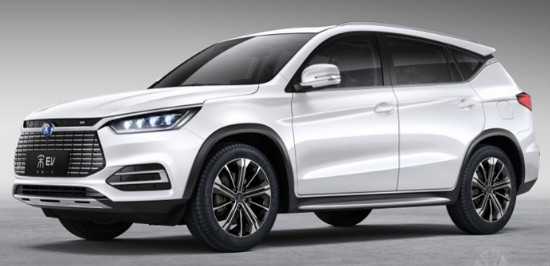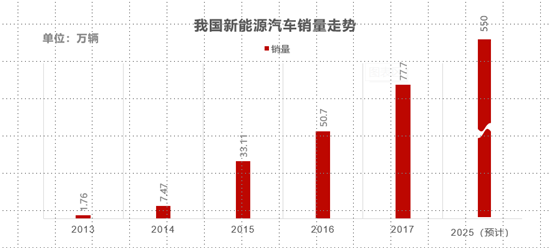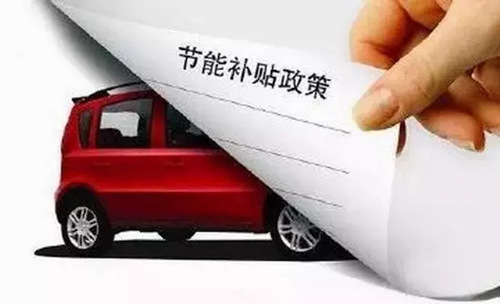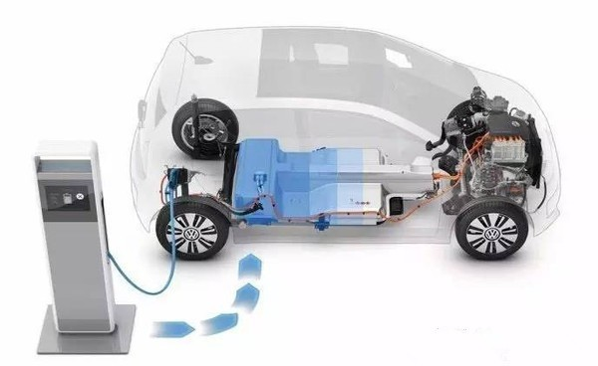
News Center
Centre de produit
Produit recommandation
Emplacementï¼Page d'accueil >> News Center
Analysis for Development Trend of New Energy Automobile Industry
Introduction:Under the support of the state's policy of promoting the development of newenergy vehicles, new energy vehicles have entered the field of vision, and theentire new energy vehicle industry has shown a booming trend. Imports, jointventures and independent brands are in line with the development trend of friendlysociety, and continue to exert strength in the new energy field. Car buying market, new energy sources willhave an irreplaceable position in future.

Clear Policy Orientation, New Energy Vehicle Sales Will Continue to Grow
In February 2018, the Ministry of Finance issued a new subsidy policy for new energy vehicles in 2018. The new subsidy standards and technical requirements announce in the notice, and the transition period was set before June 11. According to the data of the âNew Energy Vehicle Industry Market Prospect and Investment Strategic Planning Analysis Reportâ released by the Prospective Industry Research Institute, the industry in the first quarter of 2018 usheredin the market, and the production and sales volume of new energy vehicles inMarch were 67,900 and 67,800 . Vehicles increased by 105.0% and 117.4% year-on-year, and expect to continue to grow at a high rate in the second quarter. On April 1, 2018, China's auto industry double point policy will put in place, covering the largest part of the domestic passenger car production enterprises (annual production of more than 30,000 vehicles) and imported passenger car supply enterprises. The double-point system will force passenger car manufacturers to increase the development of energy-saving fuel vehiclesand new energy vehicles. It is expect that more and more new energy vehicles will introduce to the market in the second half of 2018, and new energy vehicles will produce and sold in 2020. The goal of 10,000 vehicles expect to achieve.

Policy Subsidies Have Changed and New Energy Auto Companies Are Facing Challenges
In 2017, the net profit of listed companies of new energy vehicles generally decreased from the previous year. According to the report of the Prospective Industry Research Institute, due to the many factors such as the subsidy of new energy vehicles and the large provision of bad debts of accounts receivable by some auto companies, the performance of the new energy auto sector in 2017 was weak, Ankai Bus. The net profit of Haima Automobile, Foton Motor, Zhongtong Bus, Jianghuai Automobile and Great Wall Motor all fell by more than 50%. Many new energy vehicle manufacturers such as Ankai Bus and Haima Automobile even suffered losses in 2017. With the subsidy funds for new energy auto companies in place in 2016 and 2017, the cash flow and net profit indicators of related companies will improve.

In recent years, the threshold for subsidy policy has increased. Due to various factors, the completion rate of passenger car subsidies in 2016 was poor. In the models declared in 2017, some models of many car companies such as BAIC and BYD did not pass the subsidy because they did not access the national regulatory platform. Since 2018, the momentum of China's new energy vehicle development is still good, but as subsidies decline, the profits of car companies will also affect.
Policy Impact, There Is an Urgent Need to Reduce Costs
It is worth noting that although new energy vehicles have made progress technology and cruising range, they still have immature places, which is the unpredictability of policies.
Under the role of policy baton, high cruising range has become an important direction for the development of various car companies. The subsidy policy has more support for models with a cruising range of more than 300km. Thus, the cruising range of new energy vehicles has improved in recent years. At present, the models of most enterprises can generally reach 300km. For enterprises, facing subsidies and reducing costs is the most critical. As new energy auto companies need a lot of money in the initial stage of manufacturing costs, procurement costs, mold opening, etc., the state gives certain policy subsidies to support. But to better promote the healthy development of the new energy automobile industry, the subsidy policy must reduce in a limited time.

But new energy vehicles are much more expensive than fuel vehicles, because of higher battery costs. 50% of the cost of electric vehicles purchased by customers comes from batteries. The value of this battery is 20%~30% in the life cycle of 3~5 years. After the end of the usage period, the battery is worth about 10%. That is to say, only about 30% used, and 70% of the battery cost waste. From this space, the separation of the value of the vehicle power or the change of the battery usage mode can also reduce the cost of the car.
Although new energy subsidies will cancel after 2020, the country's support for new energy vehicles will continue. For example, new car sale tax incentives willtend to new energy vehicles. Non-cash subsidies cannot ignored, including the switch to a restricted city license. Local subsidies are best placed in the use of new energy vehicles and the construction of public charging piles.

- Telï¼4001518418
- Faxï¼sales-sz@finern.com
- Addrï¼185B, rue Chexin, district Songjiang, Shanghai, Chine
Copyright ©2015 FINERN Group.Tous droits réservés.
Support techniqueï¼YUANPAI
